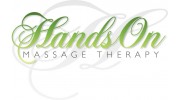 Headaches? Sore back, neck or feet? Stressed? Overworked? Emotional? Old injury? Recovering from surgery? Carpal tunnel? Whiplash? Plantar Fasciitis? Using several different techniques, each treatment is tailored to your specific needs to reduce your aches, pains and stresses caused by daily life. YOU deserve a massage!
Headaches? Sore back, neck or feet? Stressed? Overworked? Emotional? Old injury? Recovering from surgery? Carpal tunnel? Whiplash? Plantar Fasciitis? Using several different techniques, each treatment is tailored to your specific needs to reduce your aches, pains and stresses caused by daily life. YOU deserve a massage!
Served areas
- Southeast Wyoming, Northern Colorado
Associations and certifications
- LCMT (Licensed, Certified Massage Therapist)
- Member: ABMP (Associated Bodywork & Massage Professionals)
- Member: IAHP (International Association of Healthcare Practitioners)
Services
CranioSacral Therapy
Report
 CST is a gentle, hands-on method of evaluating and enhancing the functioning of a physiological body system called the craniosacral system- comprised of the membranes and cerebrospinal fluid that surround and protect the brain and spinal cord. Using a soft touch, I release restrictions in the craniosacral system to improve the functioning of the central nervous system. By complementing the body's natural healing process, CST is increasingly used as a preventative health measure for its ability to bolster resistance to disease, and is effective for a wide range of medical problems associated with pain and dysfunction, including: migraines & headaches, stress and tension releated disorders, motor-coordination impairments, infant and childhood disorders, central nervous system disorders, brain and spinal cord injuries, chronic fatigue, fibromyalgia, TMJ syndrome, scoliosis, learning disabilities, ADD/ADHD, posttraumatic stress disorder and many more.
CST is a gentle, hands-on method of evaluating and enhancing the functioning of a physiological body system called the craniosacral system- comprised of the membranes and cerebrospinal fluid that surround and protect the brain and spinal cord. Using a soft touch, I release restrictions in the craniosacral system to improve the functioning of the central nervous system. By complementing the body's natural healing process, CST is increasingly used as a preventative health measure for its ability to bolster resistance to disease, and is effective for a wide range of medical problems associated with pain and dysfunction, including: migraines & headaches, stress and tension releated disorders, motor-coordination impairments, infant and childhood disorders, central nervous system disorders, brain and spinal cord injuries, chronic fatigue, fibromyalgia, TMJ syndrome, scoliosis, learning disabilities, ADD/ADHD, posttraumatic stress disorder and many more. Neural Manipulation
Report
A nerve only functions correctly when it is free to move within its surrounding structures. This freedom of movement is essential for nerve conduction, neural blood supply, and local and systemic responsiveness.
Neural Manipulation identifies and releases local nerve restrictions while at the same time examines the effect of these local fixations on the rest of the body, and by accessing this relationship, resolves the more comprehensive (global) dysfunctional patterns.
It is important to note that the release of sensitive nerve buds can have a favorable effect on the functioning of the corresponding visceral organs. The neural manipulation is involved in all body functions and without neural control certain visceral activity cannot be maintained. This feedback loop functions providing no interference (fixation) is present.
Neural Manipulation as developed by Jean-Pierre Barral, D. O., and Alain Croibier, D. O, examines mechanical relationships between the cranium/spine hard frame to the dura and neural elements. It provides assessment and treatment approaches to address restrictions of the dural and neural components not commonly focused on with musculoskeletal symptoms.
Generally, one thinks of a trauma as a severe injury that causes damage. This definition encompasses different gradients of external forces acting on the body. For example, not every joint trauma leads to a fracture or dislocation, which is verifiable by x-ray. From a medical standpoint, patients are often considered perfectly healthy, even though they are not at all the same as they were before sustaining a trauma. The same is generally true for the neural manipulation and the nerves. Traumatic nerve lesions typically do not result in a recognizable, well-defined clinical picture. Instead a broad spectrum of disturbances can be found. Because of their inconsistency and lack of evidence (with conventional examination methods and imaging procedures) symptoms are often overlooked.
Often functional nerve lesions develop after neurotropic diseases (like herpes zoster shingles) or a result of postural imbalances. Frequently they derive from mechanical forces and energies: friction, pressure (compression) , or traction forces (stretch) , all of which affect the nerves. To bring about lesions, a trauma does not have to be severe. Such as a non-physiological movement, a harmless sprain, faulty posture, or muscle contractions. Often, it is a matter of repetitive micro-traumas. Pathological processes can take place inside and outside the nerves.
This is incorporated into each session when needed.
Neural Manipulation identifies and releases local nerve restrictions while at the same time examines the effect of these local fixations on the rest of the body, and by accessing this relationship, resolves the more comprehensive (global) dysfunctional patterns.
It is important to note that the release of sensitive nerve buds can have a favorable effect on the functioning of the corresponding visceral organs. The neural manipulation is involved in all body functions and without neural control certain visceral activity cannot be maintained. This feedback loop functions providing no interference (fixation) is present.
Neural Manipulation as developed by Jean-Pierre Barral, D. O., and Alain Croibier, D. O, examines mechanical relationships between the cranium/spine hard frame to the dura and neural elements. It provides assessment and treatment approaches to address restrictions of the dural and neural components not commonly focused on with musculoskeletal symptoms.
Generally, one thinks of a trauma as a severe injury that causes damage. This definition encompasses different gradients of external forces acting on the body. For example, not every joint trauma leads to a fracture or dislocation, which is verifiable by x-ray. From a medical standpoint, patients are often considered perfectly healthy, even though they are not at all the same as they were before sustaining a trauma. The same is generally true for the neural manipulation and the nerves. Traumatic nerve lesions typically do not result in a recognizable, well-defined clinical picture. Instead a broad spectrum of disturbances can be found. Because of their inconsistency and lack of evidence (with conventional examination methods and imaging procedures) symptoms are often overlooked.
Often functional nerve lesions develop after neurotropic diseases (like herpes zoster shingles) or a result of postural imbalances. Frequently they derive from mechanical forces and energies: friction, pressure (compression) , or traction forces (stretch) , all of which affect the nerves. To bring about lesions, a trauma does not have to be severe. Such as a non-physiological movement, a harmless sprain, faulty posture, or muscle contractions. Often, it is a matter of repetitive micro-traumas. Pathological processes can take place inside and outside the nerves.
This is incorporated into each session when needed.
Head and Shoulders
Report
Relax!
Report
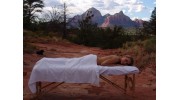 This Swedish Massage is best known for its long, gliding strokes and is especially helpful in relaxing tense, tight or sore muscles as well as easing mental tension. You'll feel physically and emotionally revitalized after experiencing the healing effects of this relaxing and soothing treatment. 30, 60, or 90 minute session.
This Swedish Massage is best known for its long, gliding strokes and is especially helpful in relaxing tense, tight or sore muscles as well as easing mental tension. You'll feel physically and emotionally revitalized after experiencing the healing effects of this relaxing and soothing treatment. 30, 60, or 90 minute session. Fix Me Up
Report
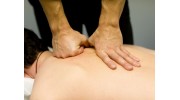 Deep Tissue massage can work wonders on the places you hold your tension. Chronic stress, tension and pain don't have to be a part of your life. This massage focuses on the muscles, tendons and fascia underlying the surface layer of muscle, releasing the concentrated tension with slow strokes and deep pressure. Once released, the muscles are able to get proper blood flow and oxygenation. The Fix Me Up may leave you with a little soreness right afterwards, but you're sure to feel better and more relaxed than you have in a long time. 60 or 90 minute session.
Deep Tissue massage can work wonders on the places you hold your tension. Chronic stress, tension and pain don't have to be a part of your life. This massage focuses on the muscles, tendons and fascia underlying the surface layer of muscle, releasing the concentrated tension with slow strokes and deep pressure. Once released, the muscles are able to get proper blood flow and oxygenation. The Fix Me Up may leave you with a little soreness right afterwards, but you're sure to feel better and more relaxed than you have in a long time. 60 or 90 minute session. Precious Cargo
Report
 Nurture yourself and your baby with this full body massage for the expecting mother. Learn to relax as you prepare for your baby's birth. This massage relaxes the body and mind, easing tense muscles, reducing soreness in weight-bearing joints, reducing swelling in the legs, ankles and feet, while providing the emotional support that nurturing touch brings.
Nurture yourself and your baby with this full body massage for the expecting mother. Learn to relax as you prepare for your baby's birth. This massage relaxes the body and mind, easing tense muscles, reducing soreness in weight-bearing joints, reducing swelling in the legs, ankles and feet, while providing the emotional support that nurturing touch brings. Rub-a-Dub-Dub
Report
Time Out!
Report
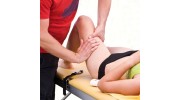 Sports Massage is a specialized form of massage that serves several vital purposes for those with an active lifestyle. Soothing strokes ease muscle soreness and tension, help in healing minor strains quickly and refresh the body. Relaxed, supple muscles help to prevent injury, allow for increased flexibility and improve performance. Whether you're an elite tri-athlete or hit the gym a couple of times a week, a Time-Out can benefit you. Feel the tension melt away as I use a healing blend of Swedish massage and acupressure. If you have a big event coming up, a sports massage before and after is an outstanding way to prepare and reward yourself.
Sports Massage is a specialized form of massage that serves several vital purposes for those with an active lifestyle. Soothing strokes ease muscle soreness and tension, help in healing minor strains quickly and refresh the body. Relaxed, supple muscles help to prevent injury, allow for increased flexibility and improve performance. Whether you're an elite tri-athlete or hit the gym a couple of times a week, a Time-Out can benefit you. Feel the tension melt away as I use a healing blend of Swedish massage and acupressure. If you have a big event coming up, a sports massage before and after is an outstanding way to prepare and reward yourself. Feeling Hot, Hot, Hot
Report
Take a Load Off
Report
Infant Massage Classes for Parents
Report
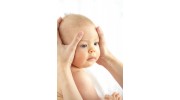 Learn the Power of Touch
Learn the Power of TouchWant a happier, healthier baby? Want a smarter, happier, better adjusted child?
Give your baby a massage!
By learning to massage your infant, you form an early bond that will help him through the rest of his life.
Benefits:
1. Tells your baby that she is loved, that she belongs, that she is beautiful.
2. Helps to develop a strong sense of self esteem, and knowledge of his place in the world.
3. Helps to reduce stress--believe it or not, we pass our stress on to our children. And, by spending special massage time with your infant, you reduce your own stress as well!
4. Helps to develop balance and motor control.
5. A baby who has been massaged knows good touch, and is able to know and refuse 'bad' touch.
In a series of classes, you will learn to massage your infant, and communicate with him through your touch. Massage can be a special time for both of you, when the world sits outside your door, and you both just relax. Older siblings can get into the act, both through the benefits of receiving massage, and by helping you in the ritual of massaging the new baby.
CranioSacral Therapy for Newborns:
Being born is a really tough job for an infant--regardless of how natural and easy the birth is. Their little heads and necks are put through some pretty strenuous work. Nature planned for this pretty well, by making them very flexible, and having all the bones of their heads fold over one another to make them small enough to travel through the birth passage.
CranioSacral Therapy (CST) is a very gentle application of touch to their heads and necks, 'inviting' the bones to go to their intended positions.
The benefits of CST for infants are numerous-- just some of the things it helps reduce or eliminate:
- Breastfeeding difficulties
- Learning disabilities
- Colic
- Autism
CALL NOW TO INQUIRE ABOUT INDIVIDUAL OR GROUP CLASSES.
Couples/Partner Massage Class
Report
 Many couples love the idea of massaging their partner and wish they could do it more, but they hold back for several different reasons: hands get tired, thumbs hurt, they get bored or they just don't know if they are doing it right.
Many couples love the idea of massaging their partner and wish they could do it more, but they hold back for several different reasons: hands get tired, thumbs hurt, they get bored or they just don't know if they are doing it right. This class will teach you basic massage theory and techniques that will give you the confidence to massage your partner effectively without causing you pain. You will learn a basic massage routine, techniques to address common areas of tension, when NOT to massage and some anatomy and physiology - don't worry, there will not be a test at the end!
All techniques will be performed in a fully-clothed, seated position. I will however, demonstrate how to use these techniques with your partner lying down. Shorts and short-sleeved shirt is recommended to get the most out of your leg/arm massage.
People

Hands-On Massage Therapy
Owner
Monica Taylor-Lee graduated from The Healing Arts Institute in Ft. Collins, Colorado in 2003 as a Certified Massage Therapist and has been practicing in Cheyenne, Wyoming ever since. She has continued to expand her knowledge of the human body and alternative therapies, refining her skill to what it is today. Her healing touch provides relief of stress, aches, pains and chronic conditions to enhance your overall health and well-being.
Reviews (4)
T.T.
Diane N.
Manny Monserrate
The massage therapy that I have been receiving has been the most effective therapy I have tried for a stubborn sinus and tight muscle issues. I have done most everything else, including accupuncture, chiropractic, drug therapy. I am getting the most benefit and relief from the massage therapy. I highly recommend it.
Heather Blakely-Voyles
I have been going to Monica for six months on a regular basis and each time I am more satisfied than the last. Monica seems to be able to seek out the areas that need the most attention and fixes them right up. Of all the massage therapists I have experienced, Monica is the most effective and caring. I would recommend Hands-On Massage Therapy to everyone I know and I do!
 This 30 minute massage focuses on the muscles of the shoulders, neck, face and scalp. Great for headache suffers or those looking for a quick dose of pampering.
This 30 minute massage focuses on the muscles of the shoulders, neck, face and scalp. Great for headache suffers or those looking for a quick dose of pampering.  For the Little Ones: This treatment is specially designed for infants using traditional massage as well as CranioSacral techniques to thoroughly address the specific issues newborns and young children face. Up to 60 minutes.
For the Little Ones: This treatment is specially designed for infants using traditional massage as well as CranioSacral techniques to thoroughly address the specific issues newborns and young children face. Up to 60 minutes.  This Hot Stone Massage utilizes smooth basalt stones to go beyond mere relaxation, helping to ground you and improve the flow of energy. Using Swedish massage in concert with gentle heat from the stones, you will be pampered like never before. 60 or 90 minute session.
This Hot Stone Massage utilizes smooth basalt stones to go beyond mere relaxation, helping to ground you and improve the flow of energy. Using Swedish massage in concert with gentle heat from the stones, you will be pampered like never before. 60 or 90 minute session.  This seated massage is applied in a specially designed chair that opens up the back muscles and relieves strain on the neck. This rejuvenating back, neck, arms and shoulder massage will leave you feeling invigorated, refreshed and energized.
This seated massage is applied in a specially designed chair that opens up the back muscles and relieves strain on the neck. This rejuvenating back, neck, arms and shoulder massage will leave you feeling invigorated, refreshed and energized.